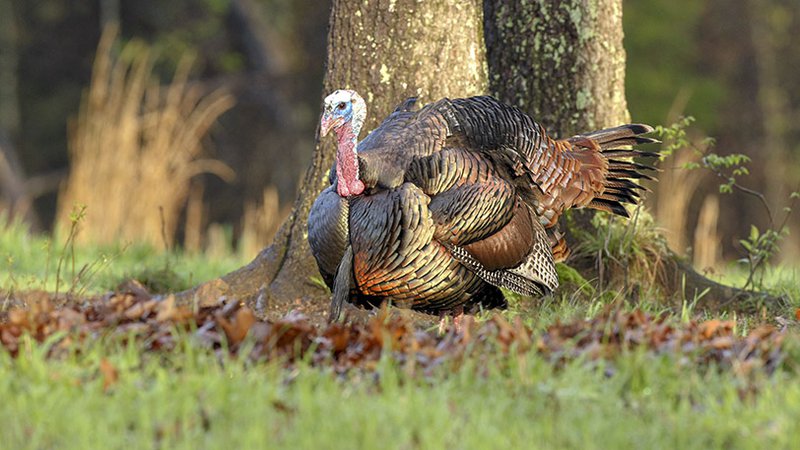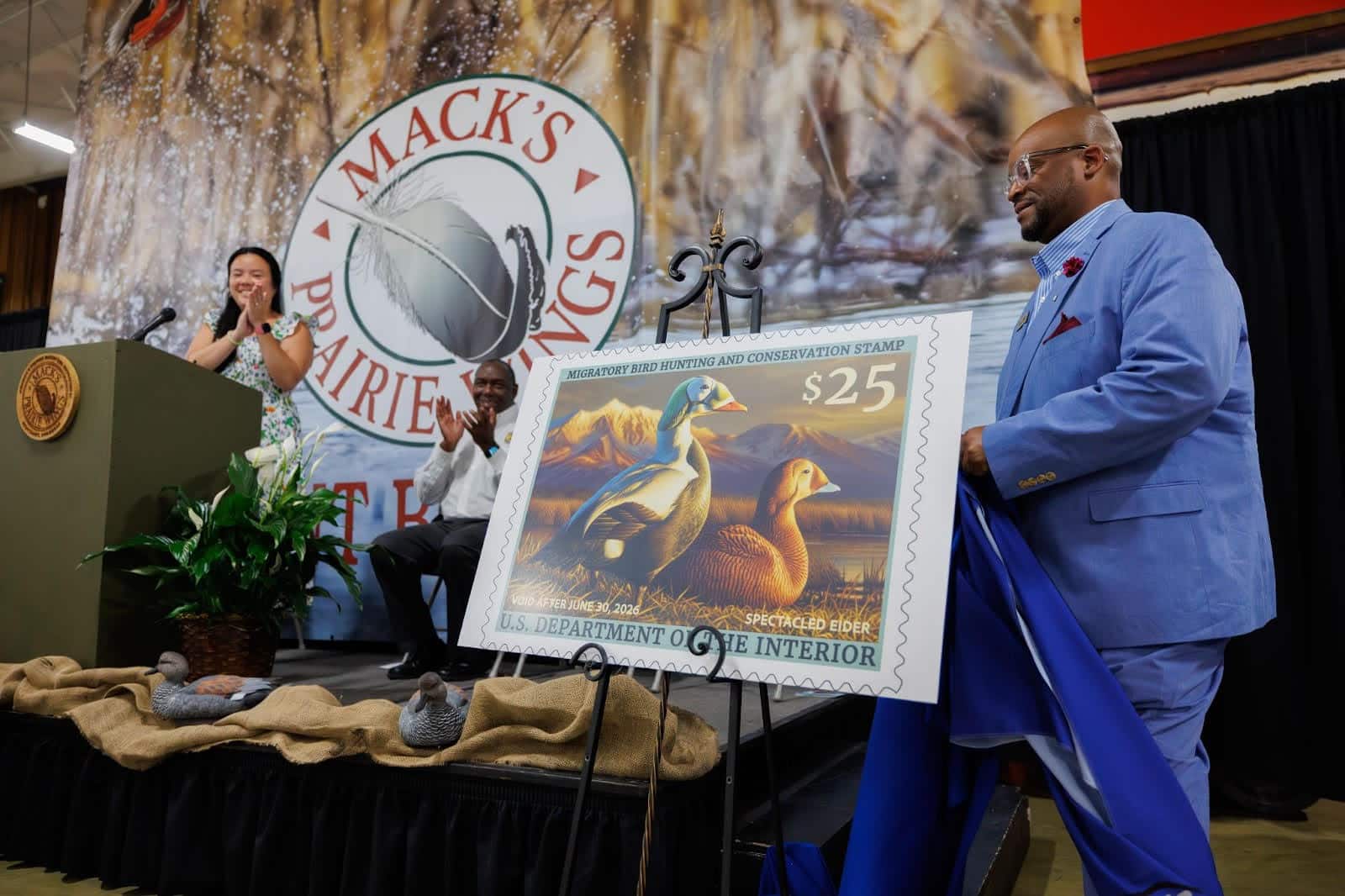Falling turkey harvest common theme in southeastern U.S.
BY Jim Harris
ON 06-27-2018

June 27, 2018
Jim Harris
Managing Editor Arkansas Wildlife Magazine
BISMARCK – Arkansas’s harvest of wild turkeys during April’s 16-day season continued in the declining direction seen for the past 14 years. The 7,885 birds reported harvested by hunters, which included those harvested during a two-day youth hunt preceding the regular season, was a precipitous and concerning fall from 2017’s 10,000-plus harvest turkeys in state.
Arkansas hunters know that cold temperatures during this timeframe didn’t help the situation, but this just puts an exclamation mark on what has been a steady decline.
The Arkansas Game and Fish Commission hosted the Southeastern Association of Fish and Wildlife Agencies’ Southeast Wild Turkey Workshop at DeGray Lake Resort State Park’s lodge recently to share information and learn what 15 other states are experiencing. Arkansas wildlife biologists learned we are not alone when it comes to concern for a decline in turkey harvest.
“We’re not the only state that sees that. Several other states are seeing the exact same issue that Arkansas has seen for the last 7, 8 to 10 years,” AGFC biologist Jason Honey said.
Joy Sweeney, the turkey program coordinator for the Tennessee Wildlife Resources Agency, who attended the DeGray conference, said, “Our numbers statewide have just come out and we saw a fall-off, too.”
The two days of presentations and discussion at DeGray Lake, the first time for Arkansas to host the working group event in 16 years, brought together nearly 100 biologists, turkey program leaders and wildlife agency administrators to share ideas and concerns about what is happening with wild turkey.
Brad Carner, Wildlife Division chief for the AGFC, shared with the group the issues Arkansas has seen the last two decades, noting that even when Arkansas hunters were harvesting a modern-day high of more than 20,000 turkeys in 2003, data was already being collected showing the average number of poults per hen was in decline statewide.
Arkansas began addressing an anticipated drop in future harvests because of the expected drop in overall production of turkeys in succeeding years after the high harvest of 2003.
Other southeastern states, some with more liberal season lengths and limits, are dealing with population and harvest number issues and what to do about them now. Dr. Mike Chamberlain, one of the region’s leading turkey research biologists from the University of Georgia, said he will be investigating harvest as it relates to overall turkey populations.
The workshop revealed some telling numbers: Missouri harvests the most birds in the region, averaging 35,000 annually, but has seen a gradual decline much like Arkansas’s. On the other hand, West Tennessee’s harvest has been increasing, compared with the rest of the state, with substantial numbers of birds in a quadrant between Jackson and Nashville (Tennessee manages turkeys by dividing the state into four sections). The quadrant closest to Arkansas, however, is in decline. Mississippi harvest numbers appear to move up and down on a 2-3-year cycle, reports show. East Texas has closed multiple counties for turkey hunting and is currently in a major restocking effort. The six Oklahoma counties adjacent to Arkansas averaged a total of 428 turkeys harvested annually.
Honey says of Arkansas’s approach, “We’re managing turkeys while it’s still based on turkey expansion. Now we have more of a stagnant population, and so, we as biologists really have to be mindful of that.
“The turkey expansion is done. You had that initial expansion after major reintroduction efforts, but once these populations begin to decline, they have to be managed differently.”
The gist of the message at the workshop, Honey said, was finding a balance of resource management and hunter satisfaction. In the current climate, he added, “We as biologists, and being hunters, and the hunters out there are both frustrated at the situation.”
But, to pinpoint the exact cause of the decline across the southeast requires research that takes several years. “And we have to be wise at spending toward that research,” he said.
The workshop discussions revealed that one downfall to current research techniques is that each state has been collecting data differently, and finding each state’s reports has been difficult among SEAFWA members. It was decided at DeGray that researchers would forward their information into one central hub to be shared so “we can effectively learn from the information that’s been collected,” Honey said.
Five years ago, he said, the membership realized they were collecting brood surveys differently across the region and, through collaboration decided to collect it the same way. That’s why everyone at the workshop could note the disturbing trend in parts of the region of a serious drop in poults per hen, Honey noted. For example, turkey hens typically lay 9-12 eggs during the breeding season. If there is a disturbance they will try to renest, but the later this happens, the more difficult it becomes because of drier conditions. Research at the workshop showed that across the southeast region, a number below 1.8-2.0 poults per hen was considered poor reproduction. In Arkansas, the Ouachita National Forest totaled 1.2 poults per hen; the rest of the state was below 1.2 poults per hen. Similar low numbers are being seen in pockets throughout the Southeast. In fact, regions on either side of the Mississippi River from Missouri to the Louisiana gulf coast show a less-than-1.2 poults-per-hen estimates.
Honey noted, “Those reproduction numbers we’re seeing are influenced by many factors such as weather, predation and habitat. We are looking at what we can influence, such as habitat improvement.”
Problems with turkey production and harvest still vary from state to state. States take different approaches to collecting harvest data, which can vary the totals significantly. But, “every biologist in the room was concerned about what was going on,” Honey said.
Recent News

Watch your wake
Jul. 2, 2025
Subscribe to Our Weekly Newsletter E-mails
Don’t miss another issue. Sign up now to receive the AGFC Wildlife Weekly Newsletter in your mailbox every Wednesday afternoon (Waterfowl Reports are published weekly during waterfowl season and periodically outside the season). Fishing Reports arrive on Thursdays. Fill in the following fields and hit submit. Thanks, and welcome!

